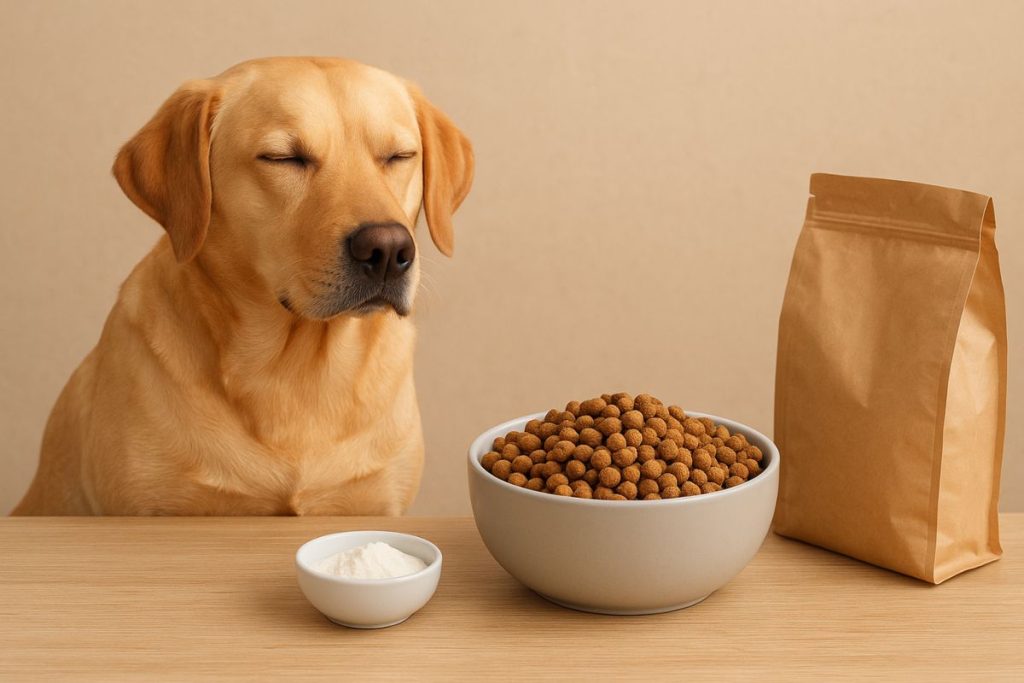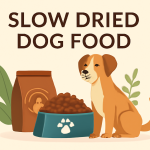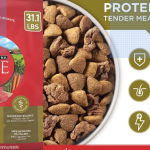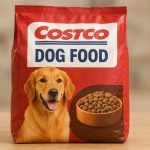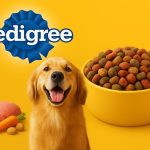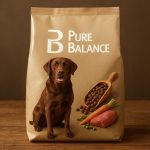Meta Title: Hypoallergenic dog food: Gentle diets for allergic dogs
Meta Description: Discover top hypoallergenic dog foods for gentle diets and allergy relief. Reviews cover grain-free & salmon recipes from Zignature, Instinct and more.
Hypoallergenic Dog Food: Gentle Diets for Allergic Dogs
Image: A dog calmly eating a hypoallergenic diet. Dogs suffering from food sensitivities need hypoallergenic dog food – a gentle, limited-ingredient diet designed to avoid common allergens. In this comprehensive guide, we’ll explain what makes a dog food truly hypoallergenic, how to spot food allergies (itchy skin, GI upset, etc.), and which diets and brands (including grain-free dog food, salmon dog food, Zignature, Instinct, and more) are best suited for sensitive pups. We’ll cover novel protein sources, elimination diets, and even provide a FAQ section. Whether you’re new to managing your dog’s allergies or looking to update their diet with the latest 2025 recommendations, this article has everything you need for a gentle, allergy-friendly feeding plan.
What Is Hypoallergenic Dog Food?
Hypoallergenic dog food is specially formulated to minimize allergic reactions. Rather than simply being “grain-free,” these diets avoid the most common allergens (like beef, chicken, dairy, wheat and soy) and often feature limited ingredients and novel protein sources (e.g. duck, venison, kangaroo or fish) your dog likely hasn’t eaten beforedogfoodadvisor.com. The proteins may even be hydrolyzed (broken into tiny pieces) so the immune system can’t recognize them, greatly reducing allergy triggersdogfoodadvisor.com. In short, hypoallergenic formulas use clean, simple recipes to soothe sensitive dogs. For example, Instinct Limited Ingredient Salmon uses just one protein (salmon) and one vegetable, omitting grains, chicken, beef and other allergensinstinctpetfood.com. Many brands (like Zignature) emphasize single-meat formulas and exclude corn, wheat, soy and other usual suspectsdogfoodadvisor.com.
Key features of hypoallergenic dog food include:
- Novel or single-source proteins: Uncommon meats (salmon, lamb, rabbit, kangaroo) not previously feddogfoodadvisor.com.
- Limited ingredients: Minimal, identifiable ingredient lists to isolate problem foodsdogfoodadvisor.com.
- No common allergens: Free from beef, chicken, dairy, wheat, soy, etc., which are known triggers.
- Grain-free (often): While not required, many hypoallergenic foods are also grain-free to exclude gluten and grain allergens.
- High digestibility: Gentle on the gut with prebiotics or added Omega-3s for skin/coat healthinstinctpetfood.comdogfoodadvisor.com.
Recognizing Dog Food Allergies and Sensitivities
Food allergies in dogs are actually quite rare — affecting only about 0.2% of dogs — but food sensitivities or intolerances (less severe reactions) and environmental allergies are much more common. Still, it’s important for owners to recognize the signs of a reaction to diet. Typical symptoms include:
- Itchy skin or scratching: Dogs often lick or chew their paws and sides, rub their face on the carpet, or develop red, inflamed skin.
- Ear infections or ear inflammation: Chronic otitis externa (ear itch/infection) can be a sign of food-related allergy.
- Hair loss or hot spots: Repeated licking or scratching can cause bald patches or sores.
- Gastrointestinal issues: Vomiting, diarrhea, soft stools or increased gas often accompany dietary sensitivities.
- Respiratory or eye/nose discharge: Less common, but some allergic dogs have watery eyes or sneezing (more typical of environmental allergy).
If your dog shows non-seasonal, chronic symptoms (itching or stomach upset that don’t clear up), consider the possibility of a food sensitivity. The Merck Veterinary Manual notes that food-allergic dogs most commonly react to beef, dairy, chicken, wheat and lamb. PetMD similarly reports itchy skin and ear infections as red flags for food allergies.
Note: Because environmental and flea allergies are more common, it’s always wise to rule those out first with your vet. Only after other causes are eliminated should you attribute symptoms to diet.
Common Food Allergens in Dog Diets
The ingredients in many commercial diets can trigger allergies. When choosing a gentle diet, be aware of these usual suspects:
- Beef and chicken: The most frequently implicated proteins in canine food allergies.
- Dairy (milk, cheese): Lactose and milk proteins can cause GI upset or skin issues.
- Soy and wheat: AAFCO considers these potential allergens. Wheat-gluten is common in kibble.
- Corn and grains: Not as allergenic as proteins, but some dogs do have grain intolerances (especially wheat).
- Eggs: Another protein source some dogs react to.
To manage allergies, avoid diets containing your dog’s triggers. In practice, that often means feeding a grain-free dog food (removing wheat/corn) or a limited ingredient diet that lists a single protein and single carbohydrate source. Zignature, for example, makes an Original Lamb formula free of wheat, soy, chicken, potatoes and other common allergens. Instinct’s Salmon formula avoids grains, chicken, beef, eggs, and moreinstinctpetfood.com. These diets give you full control over what goes in your dog’s bowl, making it easier to eliminate the culprits.
Additionally, be careful with treats, chews and supplements, as hidden sources of allergens (flavored vitamins, rawhide, flavored medications) can sabotage your efforts. Work closely with a vet to plan a strict elimination diet trial—the only reliable way to diagnose food allergy. This typically involves feeding a novel-protein or hydrolyzed diet exclusively for 8–12 weeks while avoiding all other food items.
Hypoallergenic vs. Grain-Free vs. Limited-Ingredient Diets
There’s often confusion between these labels:
- Grain-Free Dog Food: Contains no grains (wheat, corn, rice, oats, etc.), but may still include common allergens like chicken or beef. Grain-free diets usually replace grains with potatoes, peas or legumes. A grain-free label does not guarantee hypoallergenic properties. For example, a grain-free kibble might still use chicken as the #1 ingredient.
- Hypoallergenic Dog Food: Formulated to avoid most allergens. May be grain-free or grain-inclusive (with safe grains like rice), but it specifically avoids beef, chicken, dairy, etc. It often uses novel protein or hydrolyzed protein. Burns Pet Nutrition explains hypoallergenic foods use limited, uncommon ingredients (duck, fish) so the dog’s immune system is less likely to react.
- Limited-Ingredient Diet (LID): Focuses on simplicity, usually featuring one protein and one carbohydrate source. All hypoallergenic foods are limited-ingredient by design, but not all LIDs are fully hypoallergenic (some may still use common proteins). LIDs make it easier to pinpoint the allergen.
As Burns Pet Nutrition emphasizes, “Hypoallergenic dog food is not always grain-free, and grain-free dog food is not always hypoallergenic”. The right choice depends on your dog’s needs. If grains haven’t been an issue, you might opt for a novel protein diet with a single grain like rice. If your dog is suspected of gluten intolerance, grain-free might be preferred. Often, a true hypoallergenic diet combines limited ingredients and grain-free formula, but always read the ingredient list closely.
Novel Protein Diets
These diets swap out common meats for unusual ones. Examples: kangaroo, duck, rabbit, venison, bison, or fish like salmon. A dog who’s never had kangaroo has no chance to be allergic to it, making it a safe novel protein. As one source notes, novel-protein foods use “less common proteins such as venison, salmon, or duck” in place of beef or chickendogfoodadvisor.com. Novel proteins can be the centerpiece of a hypoallergenic diet – for instance, a salmon dog food is often recommended for skin/ear allergies because salmon is both novel and rich in anti-inflammatory Omega-3 fatty acidsinstinctpetfood.comdogfoodadvisor.com.
Hydrolyzed Protein Diets
In these specialized vet-prescription diets, the proteins are enzymatically “split” into tiny pieces. This process makes it nearly impossible for the immune system to recognize the protein and mount an allergic reactiondogfoodadvisor.com. Common hydrolyzed diet proteins include chicken or soy, but broken down. While effective, these diets can be expensive and may have a less appealing taste. They’re usually only used under veterinary supervision once an allergy is suspected and diagnosed.
Grain-Free Diets
Grain-free diets simply exclude grains. As Burns Pet Nutrition explains, they replace grains with ingredients like potato, sweet potato, or peas. Grains provide energy and nutrients, so grain-free foods often include alternative carbs like potatoes or legumes. Grain-free can benefit a dog with an identified grain allergy (e.g. to wheat). However, eliminating grains alone might not resolve issues if the real trigger is a protein. In fact, a grain-free kibble can still contain common allergens like chicken or beef. Therefore, grain-free diets are often paired with limited, novel protein in allergy-friendly formulas.
Key Ingredients in Gentle, Hypoallergenic Diets
The best foods for allergic dogs focus on safe proteins and easy-to-digest carbs. Here are some of the top choices:
- Salmon and other fish: Wild-caught salmon is a highly digestible, novel protein rich in Omega-3s for skin healthinstinctpetfood.comdogfoodadvisor.com. Many grain-free sensitive-stomach diets use salmon and sweet potato for this reason. For example, Instinct’s Salmon LID formula uses wild salmon plus peas and tapioca (with a raw freeze-dried coating)instinctpetfood.com. Even Blue Buffalo’s “Basics” line offers a salmon & potato recipe for allergy-prone dogs.
- Duck and Rabbit: Less common proteins like duck or rabbit rarely appear in standard commercial foods, making them great novel sources. Duck is available in foods like Zignature’s duck recipe, while rabbit shows up in limited-ingredient formulas.
- Lamb and Goat: These can be novel for some dogs, though beef-exposed dogs may cross-react to lamb (same species). Goat is especially novel (e.g. Zignature Goat Formula) and can serve as a rotating protein.
- Sweet Potato or Potato: Alternative carb sources. Sweet potatoes (white or orange) and peas are common in grain-free diets. They provide energy and fiber without the gluten in grains.
- Legumes (Peas, Lentils, Chickpeas): Often used in grain-free kibbles as carb/protein fillers. Peas appear in many salmon-based foods (see Canidae Grain-Free Pure Petite, a salmon/peas dietdogfoodadvisor.com). Be aware: some dogs may develop sensitivities to legumes over time, so if allergic reactions persist, you may need to try a food without peas/lentils.
- Oats or Rice: If grains aren’t an issue, some hypoallergenic diets use rice or oats (gluten-free grains) as the carb. For example, Merrick Limited Turkey & Brown Rice includes oatmealdogfoodadvisor.com. These grains are generally considered safe if your dog isn’t allergic to them.
In general, hypoallergenic diets avoid fillers and by-products. They often contain added fiber (pumpkin, beet pulp) and healthy fats (flaxseed, fish oil) to support the gut and skin. Always check for the presence of artificial colors, flavors or preservatives, which can also irritate sensitive dogs.
Top Hypoallergenic Dog Food Brands & Formulas
There’s no one “best” diet for every allergic dog, but certain brands excel at gentle formulas. Many vet-recommended hypoallergenic foods focus on limited ingredients, novel proteins, and easy digestion. Here are some notable options (be sure to match the formula to your dog’s specific needs):
- Zignature – Known for 100% limited-ingredient, grain-free kibbles. Zignature’s formulas use single novel proteins (Turkey, Lamb, Salmon, Duck, Kangaroo, etc.) and exclude chicken, corn, wheat, soy, and dairydogfoodadvisor.com. For example, Zignature Turkey Formula has turkey as the sole meat and no fillersdogfoodadvisor.com. The OnlyNaturalPet summary praises Zignature’s “hypoallergenic approach” to pet nutrition with clean, single-protein recipes. Customers often report Zignature eliminating allergy symptoms.
- Instinct (by Nature’s Variety) – Their Limited Ingredient Diet (LID) line features formulas like Real Salmon & Sweet Potato and Grass-Fed Lamb & Peas. The Salmon LID kibble contains ONE protein (wild salmon) and ONE vegetable, with no grain, chicken, beef, or artificial additivesinstinctpetfood.com. Instinct also coats each kibble with freeze-dried raw, boosting palatability. These recipes are AAFCO-complete and rich in Omegas for coat/skin healthinstinctpetfood.com. Instinct LID diets are widely recommended for allergic dogs due to their simple ingredient lists.
- Canidae Grain-Free PURE (Petite) – Their Salmon Recipe is an example of a hypoallergenic formula. It’s a grain-free kibble using salmon and salmon meal as primary proteins, plus limited veggies and legumesdogfoodadvisor.com. Canidae touts it as “hypoallergenic” and “vet-formulated.” Dog Food Advisor notes it’s ideal for small breeds with allergiesdogfoodadvisor.com. It contains Omega-3/6, no chicken or corn, and no artificial additives. (Canidae’s Best For: small breeds with allergies).
- Hill’s Prescription Diet z/d or Purina Pro Plan Veterinary Diets – These prescription lines use hydrolyzed proteins and are typically used under vet guidance. For instance, Hill’s Prescription z/d is a hydrolyzed chicken formula proven to reduce allergic reactions. These foods often require a vet prescription but are very effective for confirmed food allergies.
- Blue Buffalo Basics – This over-the-counter line has limited-ingredient formulas (e.g. Basics Salmon & Potato) that avoid the top 10 allergens. It’s grain-free, using salmon as the novel protein. It includes a proprietary blend of DHA, vitamins and minerals for skin/coat. Several reviewers and vets (via Petsmart, Chewy etc.) rate it highly for sensitive dogs.
- Merrick Limited Ingredient Diet – Available in dry and wet, e.g. Turkey & Brown Rice. It’s not fully grain-free (contains rice/oats) but is still good for dogs not allergic to gluten. It’s single-protein (turkey) and free from chicken, corn, wheat, soy, and dairydogfoodadvisor.comdogfoodadvisor.com. Merrick’s wet turkey formula is highlighted as an alternative for pinpointing allergies (includes turkey, rice, oatmeal)dogfoodadvisor.comdogfoodadvisor.com.
- Nom Nom Fresh Pet Food – A subscription fresh-food company. Their Pork Potluck (and other flavors) are single-protein recipes designed by vets. While pricier, owners report great success. DogFoodAdvisor notes Nom Nom creates custom diets (only one protein, pork in this case) to reduce allergy symptomsdogfoodadvisor.comdogfoodadvisor.com.
When selecting a product, read labels carefully. Check that the first ingredient is a single meat (not a “meal” mixed with others) and that no additional proteins or allergens lurk further down the list. The formulas above consistently eliminate triggers and focus on quality. Wherever possible, choose foods with AAFCO-complete statements appropriate for your dog’s life stagedogfoodadvisor.com.
Transitioning to a New Hypoallergenic Diet
Suddenly switching foods can upset any dog’s stomach, so plan a gradual transition. Follow these steps (with vet guidance):
- Consult Your Veterinarian: Before making major diet changes, especially for allergic dogs, get professional advice. Vets may recommend an elimination diet trial or prescribe a therapeutic fooddogfoodadvisor.com.
- Elimination Diet Plan: If testing for allergies, feed only the new food (and vet-approved treats) for at least 8–10 weeks. Avoid all other foods, table scraps, and flavored medications that could contain allergens.
- Slow Introduction: Over 7–10 days, gradually mix the new food into the old diet, increasing the new portion each day. This “slow switch” reduces GI upsetdogfoodadvisor.com. For example, Day 1: 25% new / 75% old, Day 4: 100% new.
- Monitor Your Dog: Watch for any signs of digestive upset (vomit, diarrhea) during the transition. If symptoms appear, slow down the switch. Continue at 100% new food for the full trial period before evaluating results.
- Patience is Key: It can take 3–4 weeks to notice an improvement in itching or skin issues after changing diets. Keep a journal of symptoms. Only after a full trial can you determine if the new food is effective.
Dog Food Advisor advises that new foods should be added gradually to prevent digestive issuesdogfoodadvisor.com. If your dog does not improve, revisit your vet for additional testing. Remember, some allergic skin symptoms linger even after dietary fixes, since itch and infections can take time to heal.
Frequently Asked Questions
- What exactly is hypoallergenic dog food?
Hypoallergenic dog food is formulated to minimize allergic reactions by using uncommon proteins and limiting ingredients. According to Burns Pet Nutrition, it “strays away from the majority of common allergens in dog food, often following simple recipes with limited ingredients.” These diets use novel proteins like duck or fish (salmon) that dogs are less likely to have eaten before. - Are grain-free diets the same as hypoallergenic diets?
No. As experts note, “hypoallergenic is not the same as grain-free”. A grain-free dog food simply lacks grains (wheat, rice, oats), but it may still contain allergenic meats like chicken or beef. Conversely, a hypoallergenic food avoids the key allergens (like chicken, dairy, soy) and often is limited-ingredient. Some hypoallergenic foods are grain-inclusive if the grain isn’t the issue. Always check labels: if you need both grain-free and hypoallergenic, look for foods that explicitly eliminate both categories of ingredients. - What ingredients should I avoid if my dog has allergies?
Common food allergens in dogs include beef, chicken, dairy, wheat, and lamb. Many canine diets also contain corn, soy and egg, which can trigger sensitivities. If your dog has skin or stomach issues, check the ingredient list and avoid these: instead, opt for formulas with single novel proteins (salmon, duck, goat) and single carb sources (potato, sweet potato). Any ingredient your dog has had frequent exposure to could be suspect – consider rotation or an elimination trial to identify culpritsdogfoodadvisor.com. - Is salmon dog food good for allergic dogs?
Yes. Salmon is an excellent novel protein choice for sensitive dogs. It’s highly digestible and rich in Omega-3 fatty acids, which can reduce inflammation and improve skin and coat. Many grain-free, gentle diets feature salmon as the primary protein. For example, Instinct’s Limited Salmon formula uses wild-caught salmon as the single protein and omits grains and common allergensinstinctpetfood.com. Canidae’s PURE Petite Salmon is another salmon-rich, allergy-friendly recipedogfoodadvisor.com. - How long will it take to see improvement on a new diet?
Changes can be gradual. It typically takes at least 2–4 weeks of exclusive feeding to notice a real difference in allergy symptoms. Some dogs show relief sooner, others take the full 8–10 week elimination trial to clearly identify the effectdogfoodadvisor.com. Always complete the full trial and keep consistent to get accurate results. - Can I make homemade hypoallergenic dog food?
In theory yes, but it’s tricky. A proper hypoallergenic home diet requires carefully balanced nutrition under veterinary supervision to ensure your dog gets all needed nutrients while avoiding allergens. For most pet owners, commercial therapeutic foods or vet-designed fresh meal services are safer and more convenient.
Conclusion: Finding the Right Gentle Diet for Your Pup
Hypoallergenic dog food offers relief for dogs with food sensitivities by removing common triggers and using gentle ingredients. By choosing limited-ingredient, novel-protein diets like those from Zignature, Instinct, or grain-free salmon formulas, many pups experience reduced itching, fewer ear infections, and better digestiondogfoodadvisor.cominstinctpetfood.com. Remember to consult your vet to confirm allergies, transition slowly, and monitor your dog’s response. The goal is a comfortable, healthy pet that thrives on a hypoallergenic diet.

